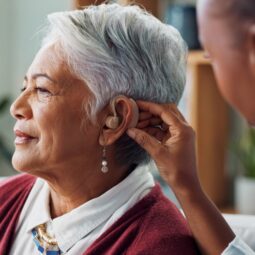By Steven Nakano, MSPT, director of rehabilitation services at The Portland Clinic.

Our jobs require many of us to spend long days sitting down, and we have the stiff necks, sore backs and headaches to prove it. Now new research suggests that these aches and pains may be the least of our problems: prolonged sitting also may be increasing our risks of heart disease, high blood pressure, diabetes, obesity, cancer, brain atrophy and shortened lifespan.
Who knew your job could be so unhealthy? But aside from quitting, what’s a person with a desk job to do?
Move. Not to a new job, but right where you are, at your desk.
It’s not the sitting, itself, that’s harming us – it’s the not moving. The body likes to be in motion. Increasing movement throughout your day – not just once a day during an exercise session – will help prevent the worst effects of all that sitting.
Here are some tips to help make your job a more moving experience.
Don’t sit still.
You may have been told to sit still as a child, but it’s better for your body to squirm. Frequently. Try these moves when you’re stuck in a chair:
- Move your back in all the ways that it moves: arch backward, slouch forward, bend side to side, rotate.
- Roll your shoulders forward and backward.
- Stretch your arms out to the sides and up over your head.
- Do circles with your head and neck.
- Straighten and lift your legs, point and flex your toes, march your feet up and down.
- Get a balance cushion for your chair.
Take a stand when you can.
Get up as often as you can and move around:
- Bend forward slowly and reach for your toes.
- Bend backward to stretch your back in the opposite of its usual position.
- Bend side to side and feel the stretch in your hips.
- Do a few mini squats, or get up and down from your chair several times.
- Stand in a doorway with your arms braced on both sides and lean forward, stretching and opening up your chest.
Meet on your feet.
Seize opportunities to break the tyranny of the chair:
- When you’re running a meeting, incorporate regular stretch breaks.
- Propose walking meetings.
- Pace when you’re on phone calls.
- Consider a sit-stand desk.
Practice your best posture.
You can’t eliminate sitting altogether, so when you do have to sit, keep good ergonomics in mind:
- Sit with your back against your chair.
- Keep your head over your shoulders, not jutting forward.
- Rest your feet flat on the floor.
- Align your knees with your hips.
- Raise your computer monitor to eye level.
- Adjust your keyboard so that your arms are at a neutral, 90-degree angle.
Most importantly, remember that no matter how good your posture is, you still need to move. As we physical therapists like to say, “The best posture is your next posture.” That stiffness in your neck and ache in your back are your body’s way of talking to you. It’s telling you that it wants to move. Listen to it.
Steven Nakano is a physical therapist who sees patients at The Portland Clinic.


